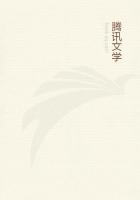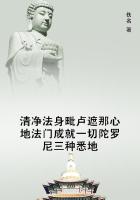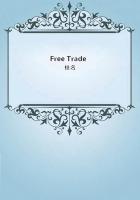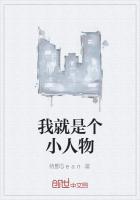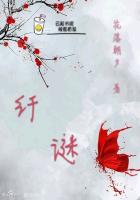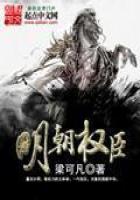or Water Stone of the Wise_, a tract included in _The Hermetic Museum_, in which this supposed correspondence is explicitly asserted and dealt with in some detail.
[1] _A Discourse between Eudoxus and Pyrophilus, upon the Ancient War of the Knights_. See _The Hermetical Triumph:
or, the Victorious Philosophical Stone_ (1723), pp.
101 and 102.
[2] JACOB BOEHME: _Epistles_ (trans. by J. E., 1649, reprinted 1886), Ep.
iv., SE III.
Apart from the alchemists' belief in the analogy between natural and spiritual things, it is, I think, incredible that any such theories of the metals and the possibility of their transmutation or "regeneration"by such an extraordinary agent as the Philosopher's Stone would have occurred to the ancient investigators of Nature's secrets.
When they had started to formulate these theories, facts[1] were discovered which appeared to support them; but it is, I suggest, practically impossible to suppose that any or all of these facts would, in themselves, have been sufficient to give rise to such wonderfully fantastic theories as these:
it is only from the standpoint of the theory that alchemy was a direct offspring of mysticism that its origin seems to be capable of explanation.
[1] One of those facts, amongst many others, that appeared to confirm the alchemical doctrines, was the ease with which iron could apparently be transmuted into copper. It was early observed that iron vessels placed in contact with a solution of blue vitriol became converted (at least, so far as their surfaces were concerned) into copper.
This we now know to be due to the fact that the copper originally contained in the vitriol is thrown out of solution, whilst the iron takes its place. And we know, also, that no more copper can be obtained in this way from the blue vitriol than is actually used up in preparing it; and, further, that all the iron which is apparently converted into copper can be got out of the residual solution by appropriate methods, if such be desired; so that the facts really support DALTON'S theory rather than the alchemical doctrines.
But to the alchemist it looked like a real transmutation of iron into copper, confirmation of his fond belief that iron and other base metals could be transmuted into silver and gold by the aid of the Great Arcanum of Nature.
In all the alchemical doctrines mystical connections are evident, and mystical origins can generally be traced.
I shall content myself here with giving a couple of further examples.
Consider, in the first place, the alchemical doctrine of purification by putrefaction, that the metals must die before they can be resurrected and truly live, that through death alone are they purified--in the more prosaic language of modern chemistry, death becomes oxidation, and rebirth becomes reduction.
In many alchemical books there are to be found pictorial symbols of the putrefaction and death of metals and their new birth in the state of silver or gold, or as the Stone itself, together with descriptions of these processes. The alchemists sought to kill or destroy the body or outward form of the metals, in the hope that they might get at and utilise the living essence they believed to be immanent within. As PARACELSUS put it:
"Nothing of true value is located in the body of a substance, but in the virtue . . . the less there is of body, the more in proportion is the virtue." It seems to me quite obvious that in such ideas as these we have the application to metallurgy of the mystic doctrine of self-renunciation--that the soul must die to self before it can live to God;that the body must be sacrificed to the spirit, and the individual will bowed down utterly to the One Divine Will, before it can become one therewith.
In the second place, consider the directions as to the colours that must be obtained in the preparation of the Philosopher's Stone, if a successful issue to the Great Work is desired.
Such directions are frequently given in considerable detail in alchemical works; and, without asserting any exact uniformity, I think that I may state that practically all the alchemists agree that three great colour-stages are necessary--(i.) an inky blackness, which is termed the "Crow's Head" and is indicative of putrefaction;(ii.) a white colour indicating that the Stone is now capable of converting "base" metals into silver; this passes through orange into (iii.) a red colour, which shows that the Stone is now perfect, and will transmute "base" metals into gold.
Now, what was the reason for the belief in these three colour-stages, and for their occurrence in the above order?
I suggest that no alchemist actually obtained these colours in this order in his chemical experiments, and that we must look for a speculative origin for the belief in them. We have, I think, only to turn to religious mysticism for this origin.
For the exponents of religious mysticism unanimously agree to a threefold division of the life of the mystic. The first stage is called "the dark night of the soul," wherein it seems as if the soul were deserted by God, although He is very near.
It is the time of trial, when self is sacrificed as a duty and not as a delight. Afterwards, however, comes the morning light of a new intelligence, which marks the commencement of that stage of the soul's upward progress that is called the "illuminative life". All the mental powers are now concentrated on God, and the struggle is transferred from without to the inner man, good works being now done, as it were, spontaneously.
The disciple, in this stage, not only does unselfish deeds, but does them from unselfish motives, being guided by the light of Divine Truth. The third stage, which is the consummation of the process, is termed "the contemplative life". It is barely describable. The disciple is wrapped about with the Divine Love, and is united thereby with his Divine Source. It is the life of love, as the illuminative life is that of wisdom.

